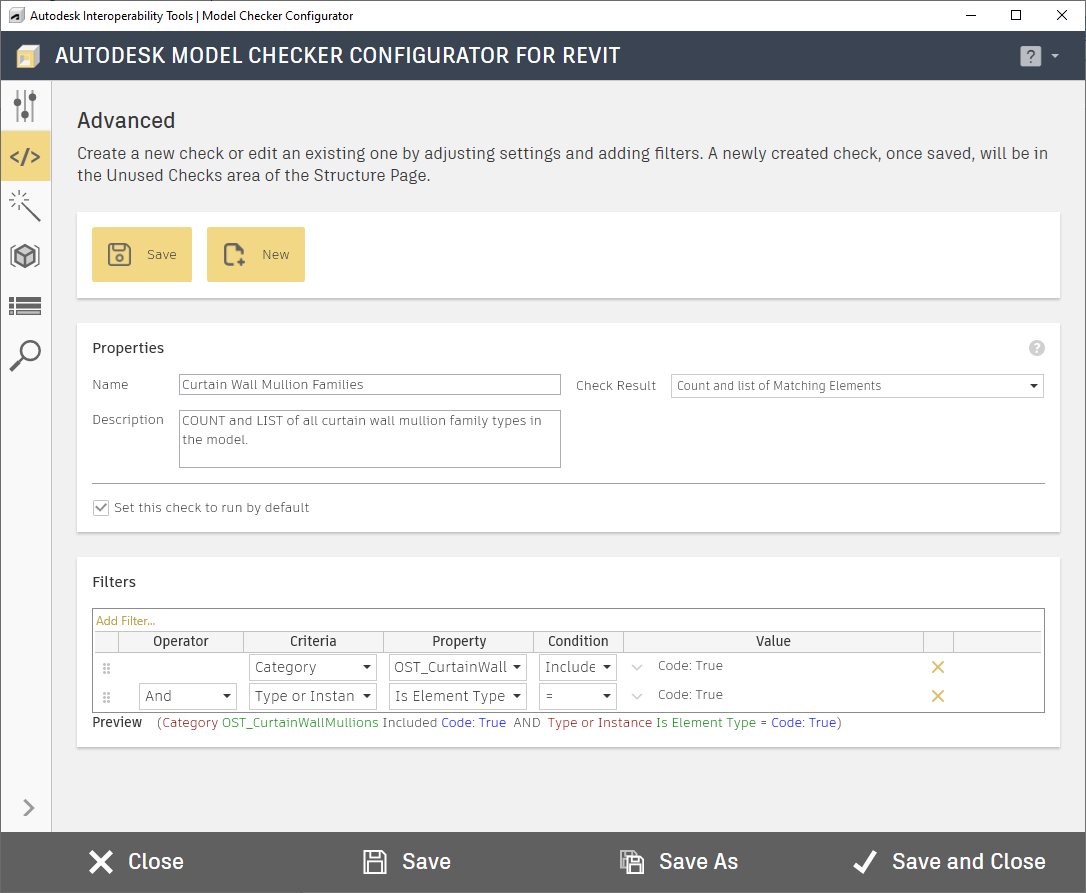Advanced Check Builder
This allows you full control over every aspect of your checks. This is recommended for those who have created checks before, or if you need to modify an existing check. When editing a check, even if created with the wizard, they will open in this interface.

Save: This saves any changes made to the current check. This does not save the checkset file.
New: This allows you to create a new check.
Name: This is where the name of the check is specified and will be displayed to the user in dialog titles, summaries, and reports in the Model Checker.
Check Result: Select from the drop down the purpose of the check. There are four options:
- Fail when no matching elements are found will report a fail when no elements are found matching the check filters.
- Fail when matching elements are found will report a fail, provide a count of the number of elements that failed, and generate a list of any elements that match the check filters.
- Count will provide a count of the number of elements that match the check filters.
- Count and List will provide a count of all the elements, and also generate a list of all elements that match the check filters.
Description: This allows for an explanation of the check and will be displayed to the user in dialog titles, summaries, and reports in the Model Checker.
Fail Message: This is the message to the users that will be displayed when the check fails. This will be displayed to the user in dialog titles, summaries, and reports in the Model Checker. This field is only provided when Check Result is set to either Fail when no matching elements are found or Fail when matching elements are found.
Filters: This allows for the creation of individual filters in the check. To reorder filters, simply drag and drop the six gray dots to the left of the filter row. Build individual filters by setting the correct, Operator, Criteria, Property, Condition, and Value.
Operator: And will add more filter criteria to the check. Exclude will remove a group of filter criteria from the check. Or will establish a new group of filter criteria for the check, independent of the prior filter groups. The Configurator will graphically indent filter groups to make it easier to recognize them.
User Defined Fields: By expanding the 'Value' expander for a filter, you can make a field user defined. Filters with user defined values will be presented to the user as fields and the user will be allowed to input their own values and/or save different configurations with different values.
Units: Expanding the 'Value' expander will give you access to the Units dialog boxes. There you can enter a value, select a unit type, and select a unit. Switching units will convert the value from the old unit to the new one.
Tips for Making Checks
If you want more help creating custom checks related to project/survey/base/origin points, see this blog post
